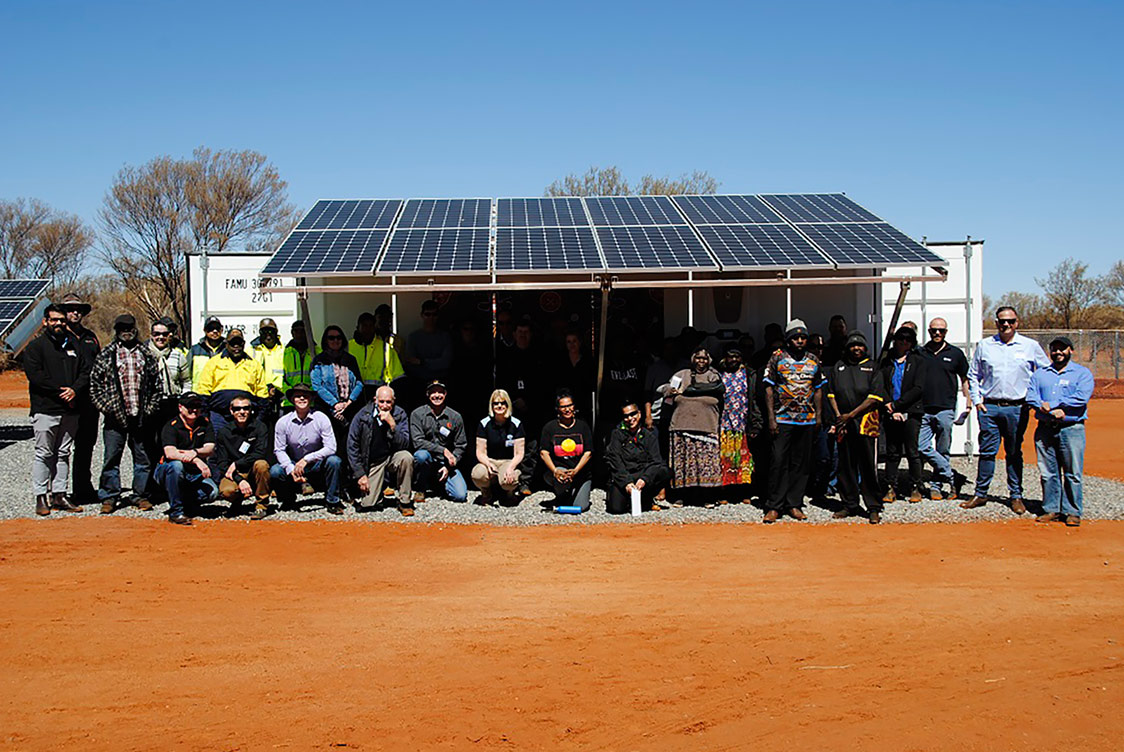The remote indigenous community of Gillen Bore in Australia's Northern Territory is now thanking its lucky stars, as an innovative off-grid solution has provided affordable and continuous potable water. The breakthrough is a solar-powered water treatment plant that has won the 2020 Institution of Civil Engineers (ICE) Chris Binnie Award for Sustainable Water Management.
Project Gilghi is the brainchild of international design and engineering firm Aurecon and Hunter-based electrical engineering company Ampcontrol. A contribution to the United Nations Sustainable Development Goal No. 6 – access to clean water and sanitation for all by 2030. A goal that also happens to be a national priority in Australia, considering its problems with draught. There are places on Mars that see more rainfall.
Professor Chris Binnie, after which the award is named, is an ICE Water Panel member and University of Exeter visiting professor who recognizes the value of the Gilghi project.
“Gilghi is a genuinely new project with a novel technological approach – the integration of the work of water engineering and electrical engineering and solar panels was particularly pleasing,” said Binnie. “The solution provides a reliable and potable supply of water in a sustainable manner that does not increase CO2 emission.”
Gillen Bore has long relied on groundwater for its water supply. For thousands of years, indigenous Australians have cultivated an intimate knowledge of Australia’s various water cycles, but the environment is now changing rapidly. Despite a new bore sunk in 2014, the community has had to largely rely on water brought from Alice Springs (a 150-km round trip) because the bore water is too high in salinity, hardness and has low pH levels.
Popular content
According to the Productivity Commission’s 2017 Indigenous Expenditure Report, more than 40,000 Indigenous Australians in 694 parts of the country rely on groundwater. By using solar PV, batteries and a backup diesel generator, Gilghi – which means “place of water” in the Barkindji language – takes feed water from a range of sources, such as bores, streams, brackish and saltwater, and passes it through three stages of treatment. The first is media filtration (sand media, carbon and softener), while the second is reverse osmosis. The third is UV disinfection.

Thanks to the Northern Territory’s plentiful sun, Gilghi charges its batteries with solar power during the day to enable the system to produce up to 28 kiloliters of potable water each day.
“We wanted to challenge traditional engineering design,” said Julian Briggs, Aurecon’s design director for water and wastewater treatment. “Typically, we design the treatment process first and then think about the energy design, but for Gilghi, we came at it from both angles so that we could use a sustainable power source to challenge the concept of needing to go to the grid to rely on diesel-generated power.”
Thanks to the project’s innovative solar-integrated approach, the modular unit design is transportable and expandable. Indeed, the very unit built at Gillen Bore was prototyped, assembled, connected and tested at Ampcontrol’s facility in Newcastle, New South Wales, before it was trucked across Australia in a shipping container and installed with the use of a forklift. This flexibility makes the project a genuine contribution to improving access to clean water and sanitation in Australia and around the world.
This content is protected by copyright and may not be reused. If you want to cooperate with us and would like to reuse some of our content, please contact: editors@pv-magazine.com.



Off grid solar system solution is offered as complete packages, which can be independently installed at your property for electricity generation. An off grid solar system Karachi package will typically include solar panels, converter, and batteries, all of which are required for power production to utilization for domestic or commercial use